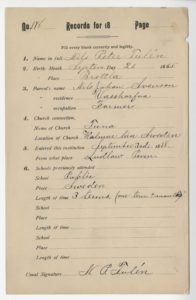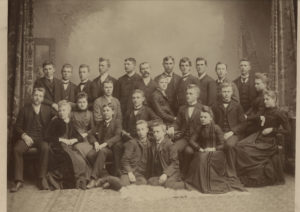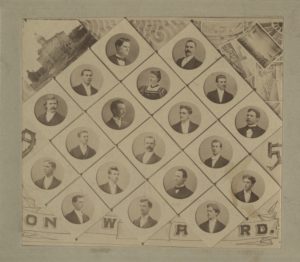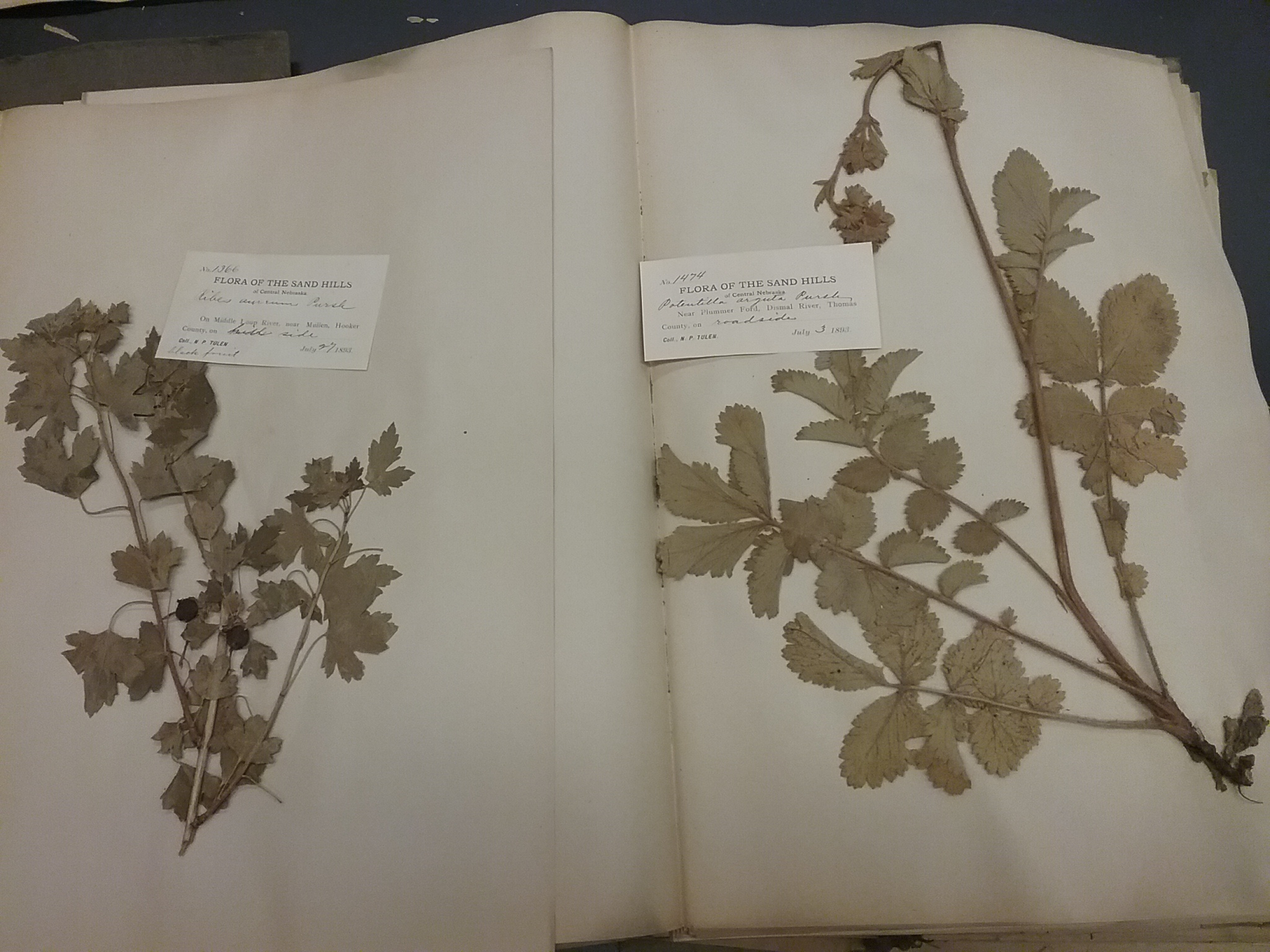Recovering and putting in context the work of 19th century botanists.

The most remarkable set of specimens in the AUGIE herbarium was collected by a former student of Augustana, Nels Peter Tulén, in the 1890s. During the past months, and thanks to the invaluable help of our librarians Emma Lincoln, Donna Hill, and Samantha Crisp, we have been able to discover who was this person and how these specimens ended up in the herbarium. The images are posted here with the permission of Augustana Special Collections.
Nels Peter Tulén (sometimes written Tulen, Tuleen or even Tulin) was born on Sept 21st 1865 in the village of Tuna, SE Sweden, Kalmar County. He moved to the United States when he was 21 and after a short period in Pennsylvania, he arrived to Illinois in 1888 and joined the Augustana Preparatory Department (a cycle of courses for Swedish immigrants to get ready before they joined the college).
It was during this period when he began his botanical training, likely under the supervision of Gustaf Forsberg. The herbarium keeps a few specimens from this period (1890 and 1891), they are mostly collected around campus by him and although their condition is not as good as the Nebraska specimens, some of them are well preserved. The labels of these specimens are annotated with ink in two colors.
Tulen joined the college as a student in 1891, and graduated in the class of 1895. According to the academic catalog, he took his formal training in botany (5 weekly hours) during the Fall term of his Sophomore year, in 1892. The science professor at that time was J. A. Udden.
- Augustana Preparatory Department. Class of 1891. N.P.Tulen is in the middle of the photograph, holding a book (Augustana Special Collections)
- Augustana College, class of 1895. N.P. Tulen is in the right end of the second row. (Augustana Special Collections)
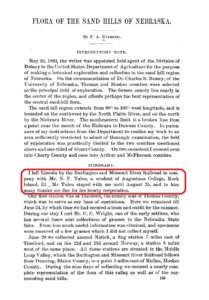
During the summer of 1893 (between June 14th and August 25th), Tulen became the field assistant of Per Axel Rydberg, another Swedish immigrant who would later become the first curator of the herbarium of the New York Botanical Garden. Rydberg, who already had some experience as a field botanist in the area, received a commission of the USDA to survey the flora of the Sand Hills (Nebraska). Since Rydberg had been teacher at another institution linked to the ELCA (Luther Academy, Wahoo, NE), it is reasonable to think he would have been in touch with Tulen’s professors if he was looking for an assistant.
Rydberg published The Flora of the Sand Hills in 1895. He acknowledged Tulen’s cooperation during the field work and provided a list of taxa and specimens published in the Contributions from the United States National Herbarium. Rydberg collected about six hundred specimens in that trip, many of them are today deposited at the NYBG. What (to the best of our knowledge) was completely unknown, is that Tulen brought back to Rock Island a virtually complete set of duplicates of this collection.
Tulen graduated from Augustana in 1895 and was ordained from the Augustana Synod in 1899. He served as a pastor in several congregations until his death in 1928. Although there is no evidence suggesting that he continued developing his passion for plants, the quality of his specimens and the extreme care with which they were pressed and labelled vouch for an outstanding and meticulous work.
Tulen’s specimens were packed in several paper folders by taxonomical order and each of them was carefully labelled with labels that are the same to those used by Rydberg, except for the the name of the collector. Localities, dates and collector numbers are identical to those listed in the publication of the Flora of the Sand Hills. The folders were tied in bundles and protected with herbarium pads by an unknown professor. These specimens survived being moved to at least three different buildings on campus during the past 120 years and were not re-discovered until 2016. Although the condition of the specimens is excellent, they were never mounted on acid free paper. Currently, Nelly Gutierrez-Gonzalez is meticulously working to make sure that this invaluable collection is preserved for the future generations as well.
